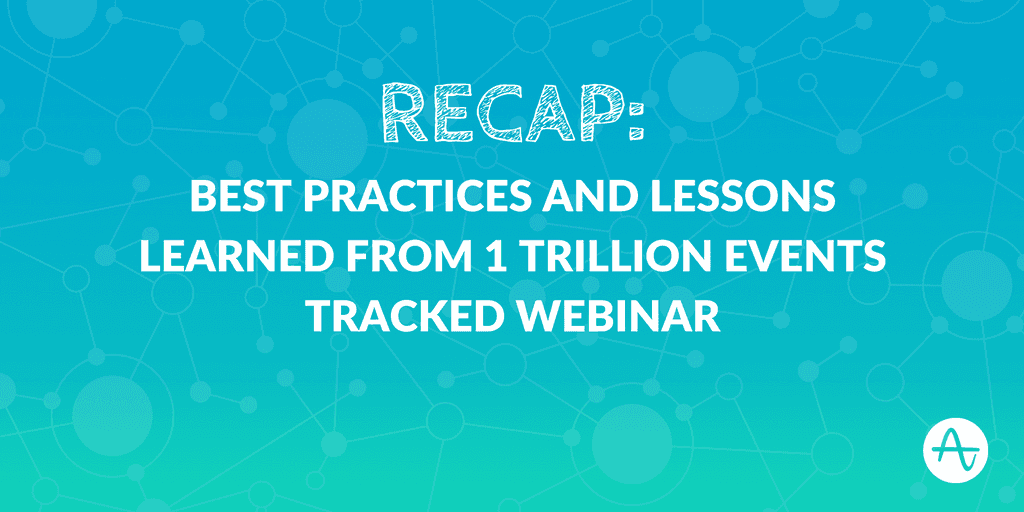Lessons Learned from 1 Trillion Events Tracked: Webinar Recap
Product development has changed fundamentally--it’s no longer the norm to ship packaged software that users have to learn and adjust to.
Earlier this month, we reached an exciting milestone here at Amplitude: we’ve now tracked over 1 trillion user actions. Using some of that user behavior data, we shared a new way to think about retention–bracket retention–for apps that are not daily usage, instead of the industry standard “N Day” calculation. We also hosted “Best Practices and Lessons Learned from 1 Trillion Events Tracked,” during which Amplitude CEO Spenser Skates shared four additional lessons he learned over the course of four years at Amplitude. If you missed Spenser’s webinar a couple weeks ago, not to worry. We’ll be recapping those lessons in today’s post. To view a recording of the webinar, you can also go here.
Lesson 1: Retention matters.
We’ve covered a lot of content on the Amplitude blog about why retention is so important. One of the main reasons Spenser and his co-founder Curtis started building Amplitude was to address the pain of not being able to improve the retention of their first product Sonalight, a voice recognition app for Android. As Amplitude was being built, Spenser realized that not only does retention matter to young founders and startups, it matters across the board to top consumer apps in the App Store, to B2B companies, and enterprises alike. In fact, retention is the number one predictor of success for most businesses; it is the one metric that matters for sustainable growth.
Lesson 2: What users do is more important than who they are.
Marketing metrics almost always encompass descriptive, demographic data. To come up with product strategy, it’s not uncommon for teams to track things like gender/age, where a user comes from, and the device or platform used. We emphasize placing less importance on who your users are and more on what they do–this is the crux of user behavior analytics. Understanding how users behave in and navigate through your product gives you vastly more direction on how to best shape your product so that it continues to add value and delight to those who use it. This is precisely how, explains Spenser, Facebook unseated so many of their early social competitors. By focusing on the observation that adding seven friends within ten days of joining was the best predictor of that user sticking around, Facebook was able to build a product centered around adding and interacting with friends. They quickly beat out their major competitors at the time, including MySpace. Spenser also shared the story of one of our customers, marketplace-type product like Etsy that was looking to improve its retention. The developers segmented their active users by a number of demographic user properties like geography and device type. They found that there was really no difference in the retention rate of these segments; instead, it was the cohort of buyers who all exhibited a specific behavior–in this case, it was sending a message to the seller–that showed a significant lift in retention. While the demographic data (i.e. “who the users are”) didn’t show any useful insights that would inform product changes, behavioral data (“what they users do”) did.
Lesson 3: Your product’s value may surprise you.
Your product is what your users intend it to be, not what you intend it to be. Sometimes behavioral analytics can uncover surprising use cases for your product that you can capitalize on. If you can get more users to experience that value as sooner, you can take your product’s success to the next level. Meditation app Calm experienced precisely this. While looking for ways to improve their user retention, they decided to look at how retention of the cohort users who used the ‘set a reminder’ compares to other cohorts. They discovered that these users retained 3x better than the rest of their current users. Calm discovered that the value that they provided to their users wasn’t just self-guided meditation sessions themselves–they also served the purpose of reminding users to meditate. Now, Calm is experimenting with highlighting the ‘set a reminder’ feature early in the onboarding process, in order to get their users to experience that value faster and consequently retain longer. You can read more about Calm’s story here.
Lesson 4: Users shape product
Last week, we shared Spenser’s vision for building better products. We rounded out our “Lessons Learned” webinar briefly touching on this important trend. Product development has changed fundamentally–it’s no longer the norm to ship packaged software that users have to learn and adjust to. Now the best companies directly communicate with users via behavioral data to figure out how users navigate their product and what value they derive. Product adjustments and refinements can be made in incredibly short cycles. Companies win by building products shaped by their users.
Be sure to read Spenser’s thought piece “Let’s Build Better Products” to learn more about this trend as well as how Amplitude users helped shape a brand new version of our analytics platform. Over the next several months, we’ll be going more in-depth with customer stories and data to supplement each of these lessons, so be on the lookout for that both on the Amplitude blog as well as in external publications. If you missed the webinar, be sure to catch it here!

Archana Madhavan
Senior Learning Experience Designer, Amplitude
Archana is a Senior Learning Experience Designer on the Customer Education team at Amplitude. She develops educational content and courses to help Amplitude users better analyze their customer data to build better products.
More from Archana




